
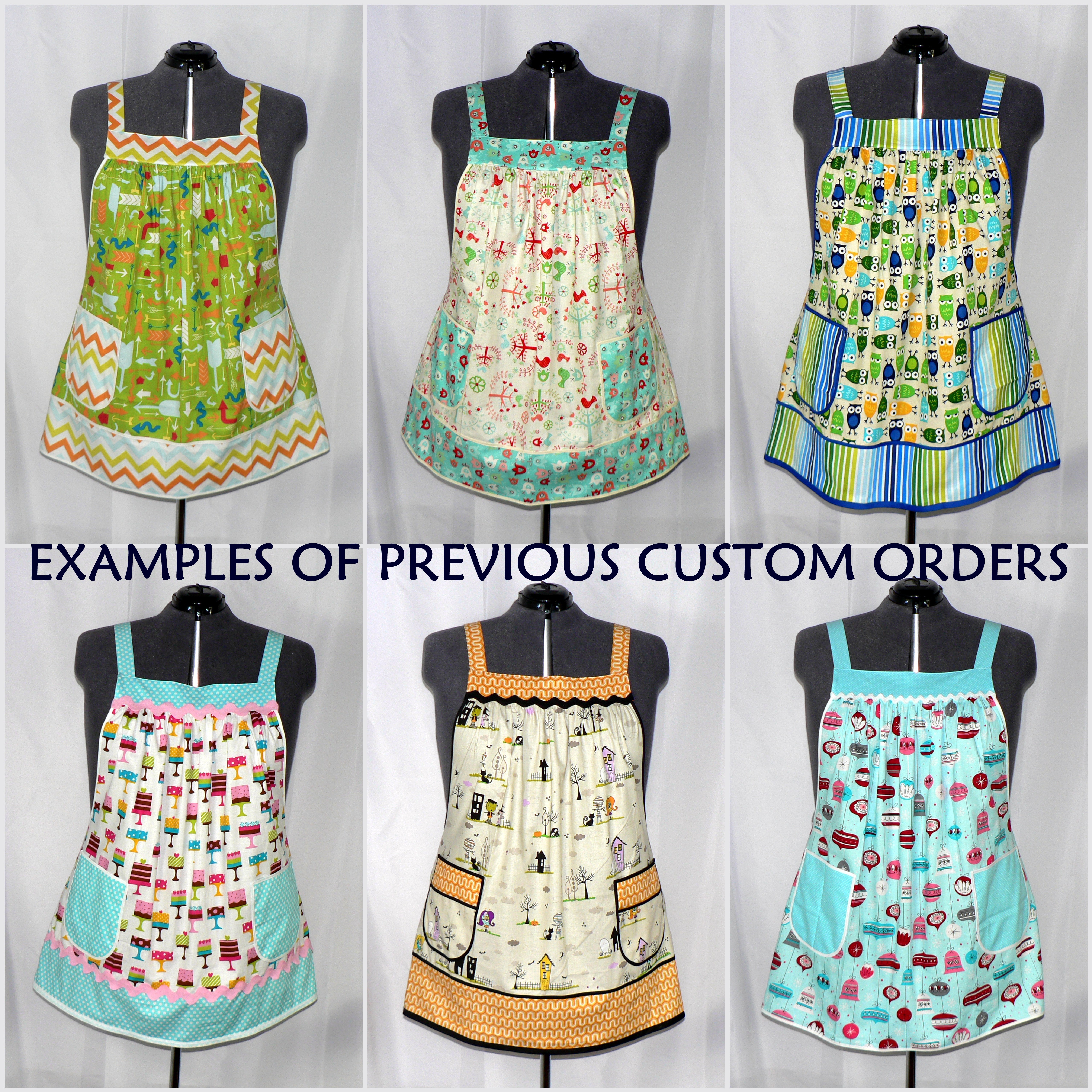
Picking the right fabric is probably the most important decision to make when planning your apron. It helps to consider the purpose of your apron. Will you be wearing the apron in a hot kitchen while cooking? Or are you an artist who wants to minimize the mess when you're painting? You might be a server who wants to jazz up their uniform and wear a pocket apron that suits their personality. There are many options to consider and I offer several choices in my shop. You can always contact me to work out these details, but here’s a guide that covers the basic fabric options for your Customized Apron.
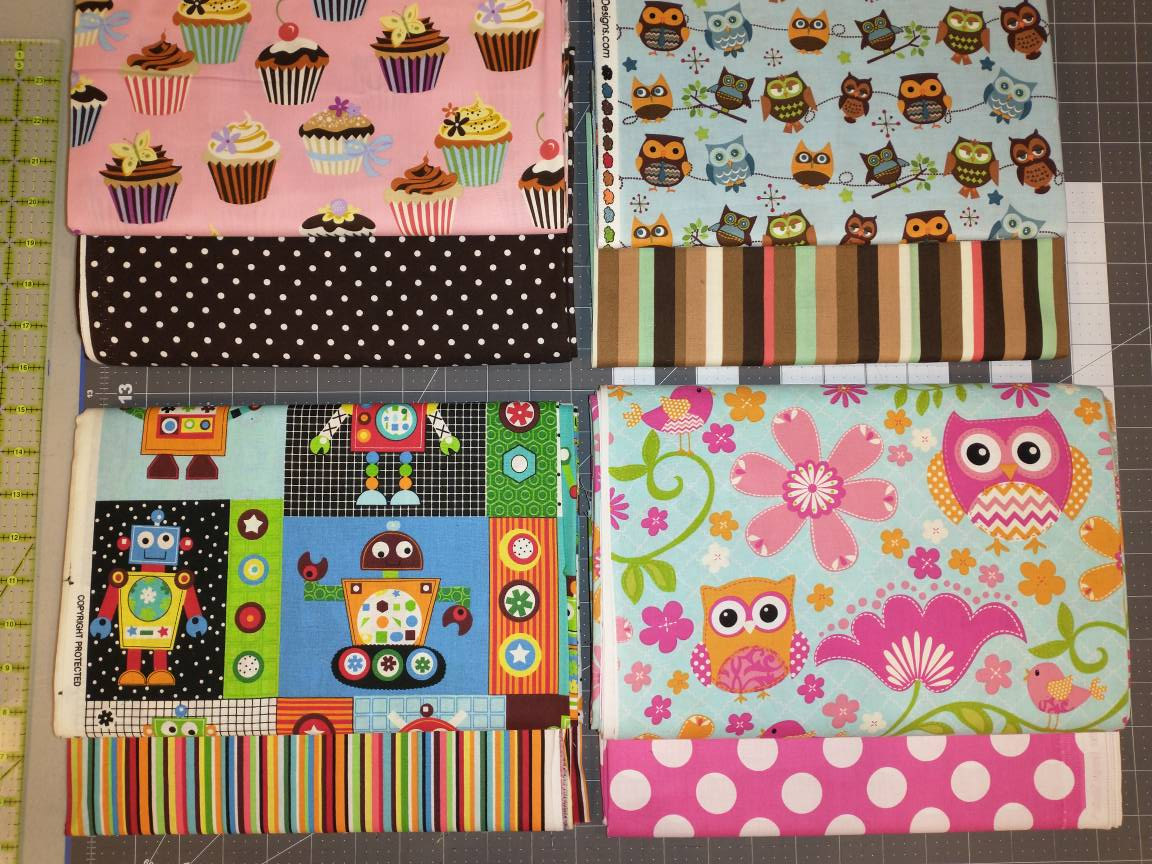
Cotton quilting fabric
This is the type of fabric I use most often for making aprons. Cotton is a popular material for aprons because it is soft, breathable, and not too heavy to wear for long periods. Cotton is also simple to clean and it is effective in absorbing moisture, making it a good option for general use in the kitchen. Cotton quilting fabrics come in the widest selection of pretty colors & patterns. Teachers often choose this type of fabric for their Multiple Pocket Half Aprons because it offers so many options for customization. Choosing the fabric can be overwhelming because of how many choices there are-- but it's kind of fun too.
I typically use 2 COORDINATING QUILTING FABRICS for my aprons-- but using just one fabric for everything works as well if that is your preference. Since I buy the majority of my fabrics online, I try to stick to designer quilting "fabric coordinates" for my aprons because that's the easiest way to be sure colors match. The manufacturer designs each collection using a specific color palette so that the many fabrics in the collection look great when used together.
When choosing quilting fabric for your apron, remember that the main fabric plays the starring role. Choose a fabric that resonates with you and reflects the vibe you want your apron to convey. The secondary fabric (the accent fabric) should complement the main fabric without being too similar. Consider the scale of the prints for the two fabrics - having one with a larger scale print and the other with a smaller pattern can create a nice balance. If you prefer a solid-colored apron, I also offer Robert Kaufman Kona Cotton aprons, which come in a wide range of colors.
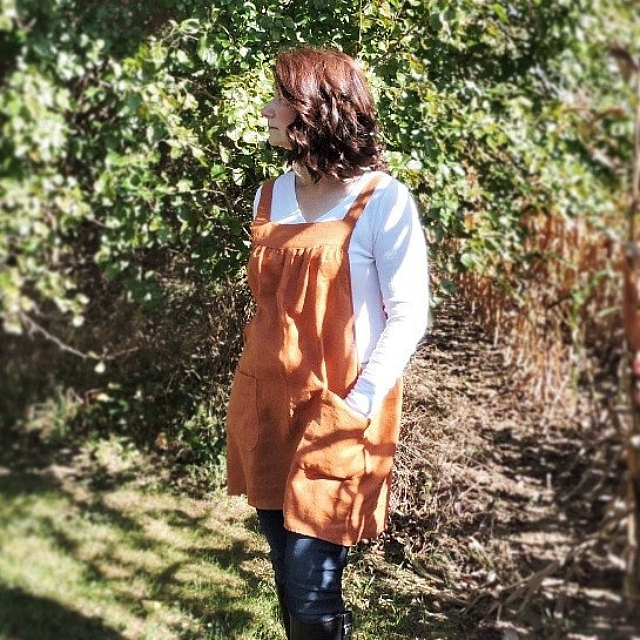
Linen fabric
Linen Aprons have become very popular in the last several years. Derived from the stem of the flax plant, linen is one of the world’s oldest textiles. Linen is one of the most breathable and absorbent fabrics, ideal for hot temperatures. I precondition the linen I use by washing and drying it in hot temperatures to preshrink the fabric before I cut into it. Washed linen is so versatile, carefree, and livable that you will love wearing it. The more you wear it and wash it, the softer it gets...and no need to iron it. Just wash, dry, and go. Part of the charm of linen is the casual rumpled appearance! Linen typically comes only in solid colors. Occasionally, I find a woven plaid linen to buy but not very often. Linen is sturdier and thicker than quilting cotton fabric, but it is very breathable so it would also be recommended for kitchen wear.
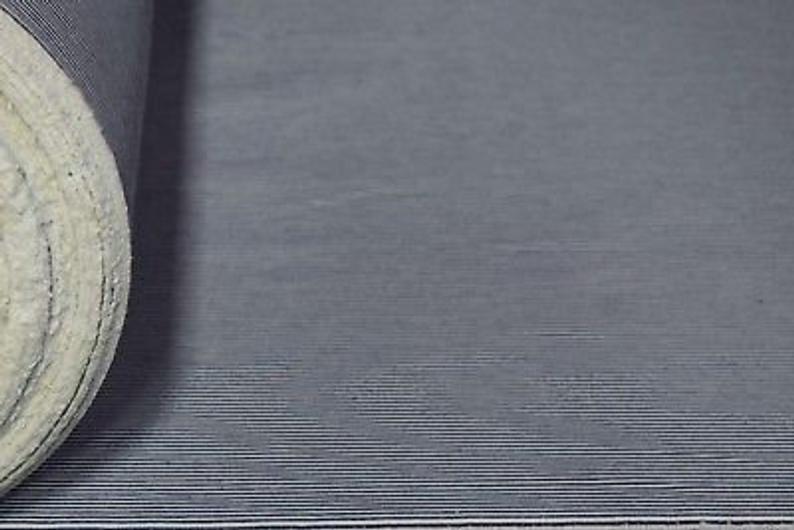
Denim fabric
Denim is a heavyweight cotton fabric that offers superior durability and protection compared to the other materials. A Denim Pinafore makes a wonderfully protective artist smock. Denim is also a fashionable choice for informal or rustic aprons, but it may feel a bit too warm in hot kitchens or restaurants. The denim I use is quite thick and a bit heavy making it the sturdiest fabric available in my shop. I machine wash and machine dry the fabric for extra softness, and to pre-shrink the fibers before making the aprons.
The "big name denim" fabric that I use has been purchased in limited quantities as "deadstock" and may not be available to reorder. Patterned denim has become hard to find in the years since the pandemic, but I do still have a bit of the Railroad Striped Denim-- enough to make a few more aprons. (UPDATE: I just found and ordered more Hickory Stripe Denim to make a new version of that formerly popular apron! The blue stripe in the Hickory stripe fabric is wider than the off-white stripe, whereas the blue and white stripes in the Railroad stripe denim are equal to each other.) I've used denim to make Chef's Aprons, the 50s Smock Apron, Pinafore Aprons, and the Multiple Pocket Half Aprons by custom request. One of my favorite custom request memories is of a denim "barn apron" with extra large pockets specially ordered because the customer's donkey liked to help itself to the carrots she carried in her pockets! She needed something sturdy and a Denim Pinafore was just the thing for her!
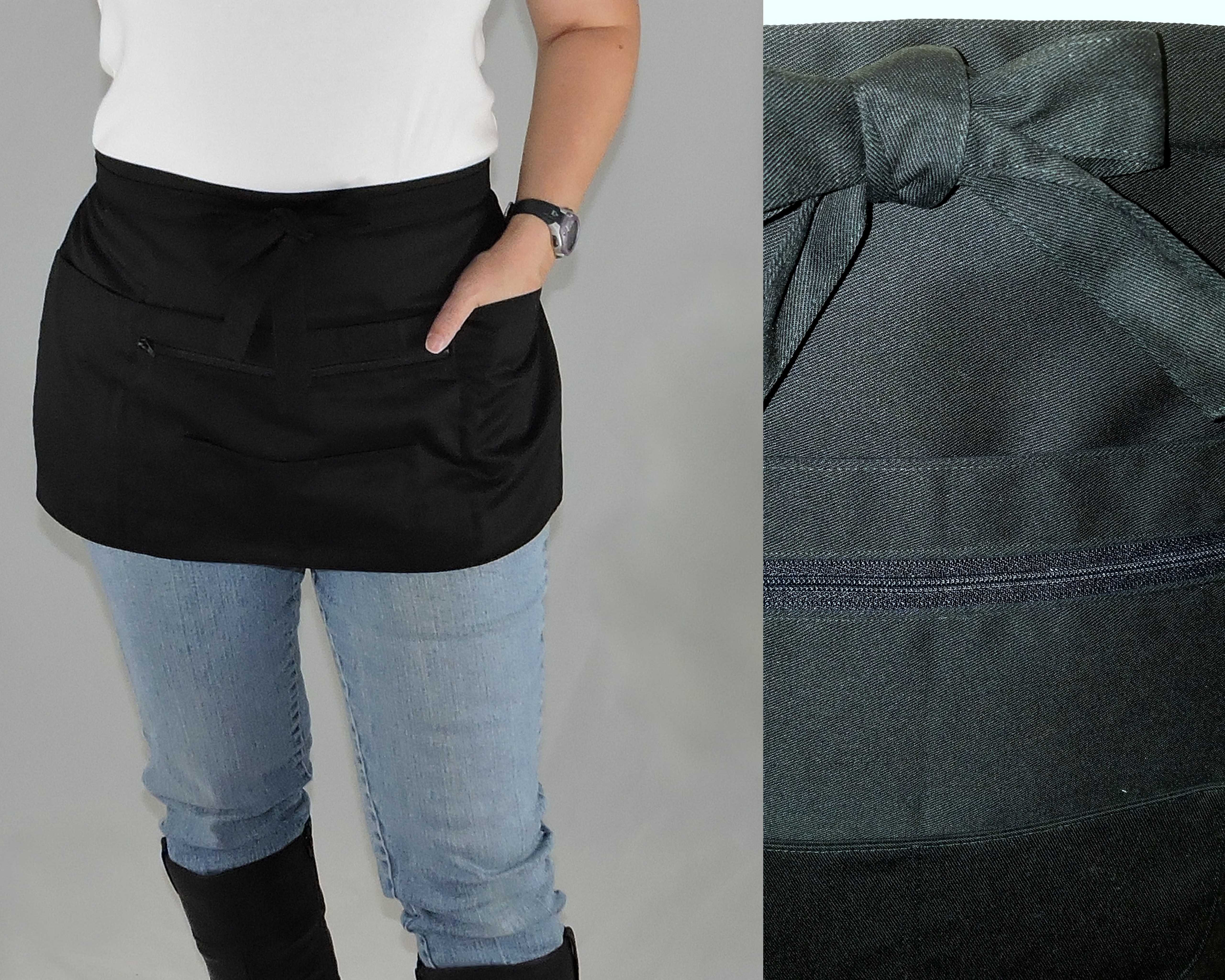
Poly/Cotton Blends
The only fabric I use for aprons that is NOT a natural fiber is a Perma-Press polyester/cotton blend for the Black Multiple Pocket Half Apron shown above. Polyester is a durable, wrinkle-resistant fabric that can withstand frequent cleaning and drying, making it an ideal material for industrial and commercial aprons with heavy usage. Polyester is resistant to stains and fading, which makes it a practical option for duties that require a lot of wear and tear on an apron, like waiting tables or teaching little ones.
One last option
On occasion, I have customers who ask if they can send me fabric to make an apron. Yes, that is possible. If you have a vintage textile that you want turned into an apron? Contact me to discuss the details! If you have fabric(s) that you love and want to send them to me to use for an apron-- I can send you my address. If you have specific colors that you want to match your business logo-- it is better to choose the fabrics in person so that you can see the colors with your own eyes. Shop locally so that you can find the exact colors you want, and then you can send the fabric to me. Feel free to contact me -- I can let you know how much fabric you need to buy to make the apron you want, in the size you need.



